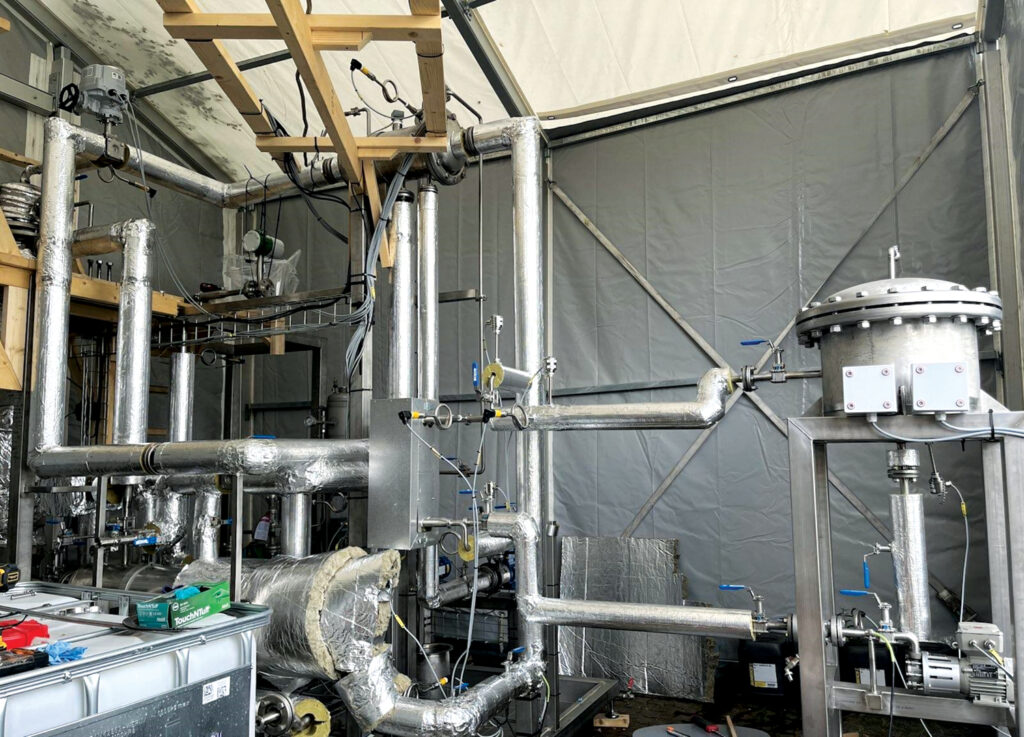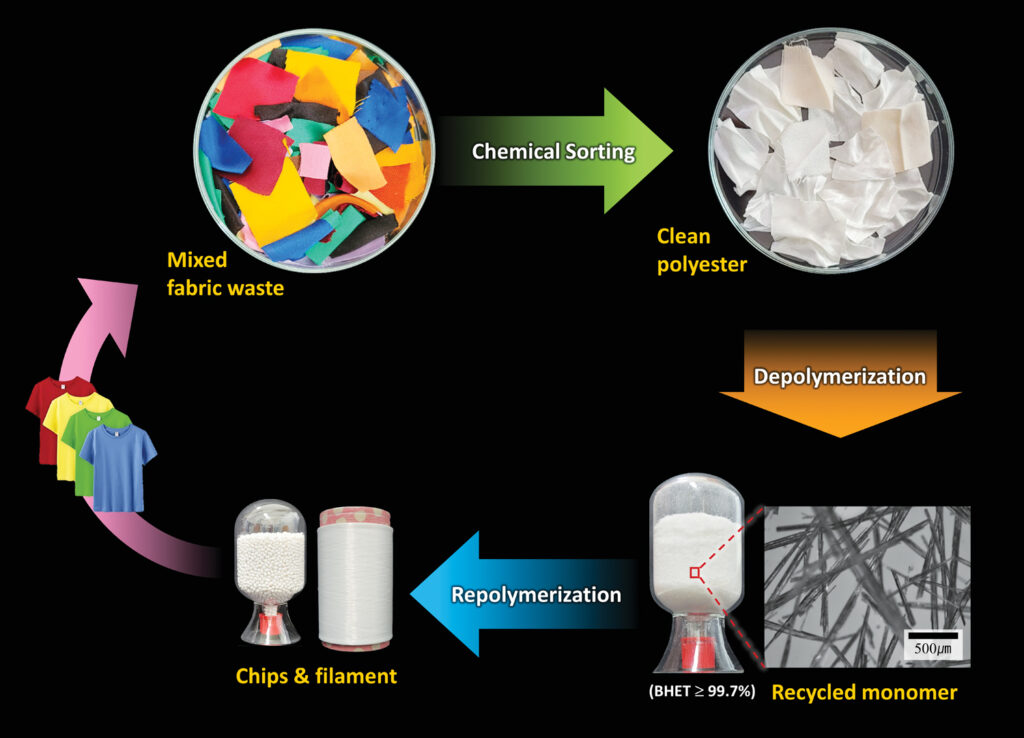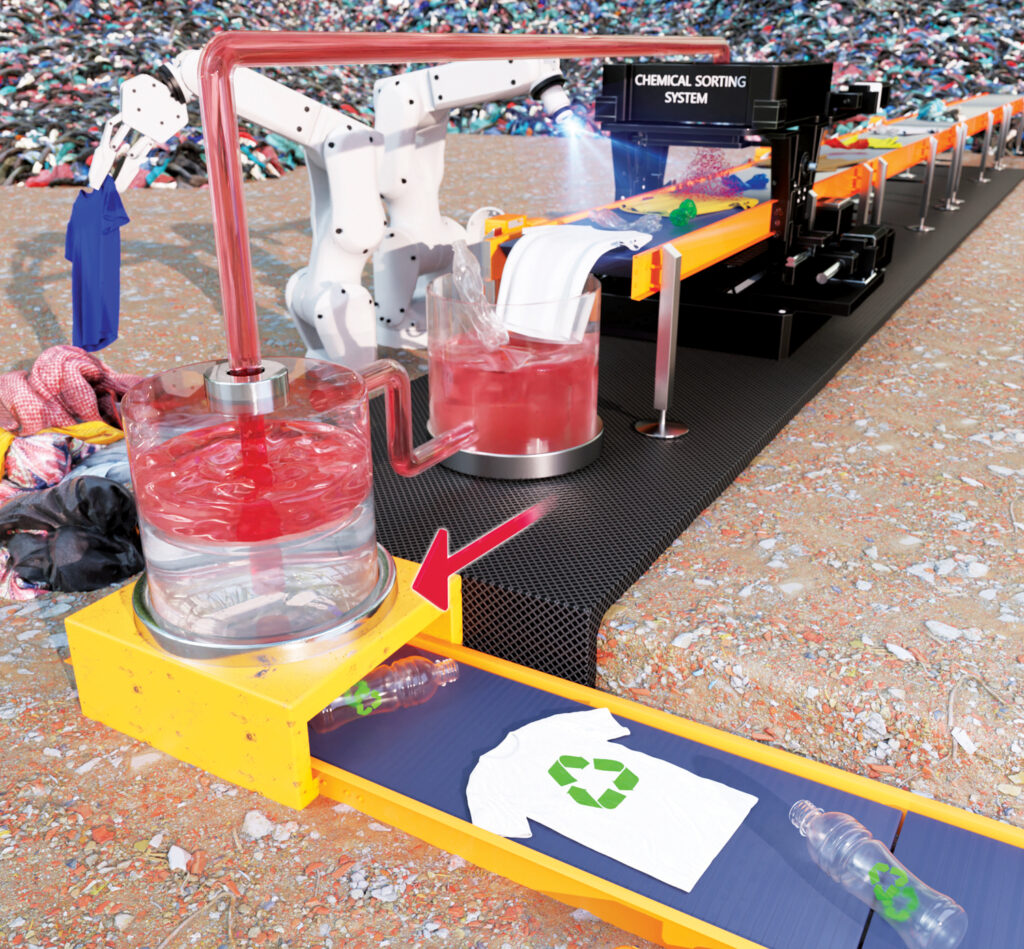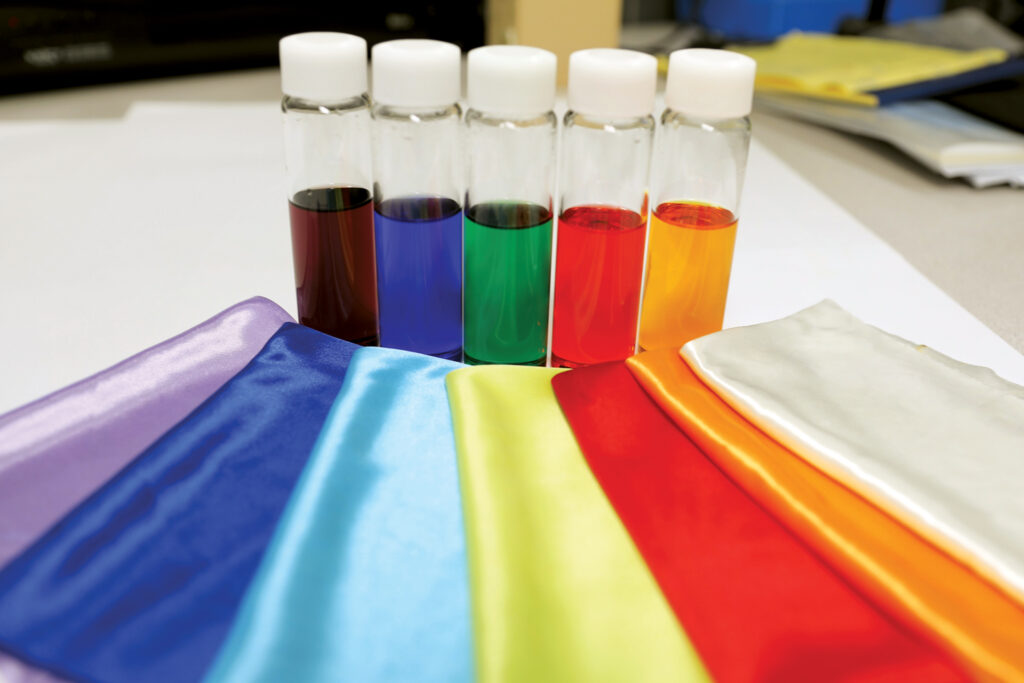
As the detrimental environmental impact of the textile and apparel industries becomes better known and understood, great effort is being expended to become greener, with the recycling of textiles receiving considerable attention.
However, recycling presents enormous challenges. Figures provided by Joungmo Cho, Ph.D., indicate that currently far less than 1% of all waste textiles are recycled. At the same time, global fiber production continues to rise, further endangering the environment.
Mixed-textiles waste poses a special concern. As Cho, principal research engineer at the Research Center of Green Carbon Catalysis at the Korea Research Institute of Chemical Technology (KRICT), explains, clothing is typically a mix of natural and synthetic fibers, the latter of which does not easily decompose in nature. Of this, polyester comprises the largest percentage.
Additionally, mixed-textiles waste contains various dyes and impurities, making recycling and reusing the materials difficult. For this situation to improve, efficient sorting of materials and control of impurity levels is essential, Cho says. However, he adds, the technologies currently in use are typically labor-intensive, costly and inefficient.

For this reason and others, Cho favors chemical recycling, saying it “has the potential to ideally convert synthetic fabric wastes into raw building-block materials, allowing for repeated use or fabrication of new polymer materials.”
Sarah Hickingbottom, Ph.D., general manager for Circa Group AS, also sees chemical recycling as providing the answer for the recycling of mixed-fiber textiles, particularly because mechanical recycling damages fibers. Using a chemical solvent recycling process makes it possible to reclaim feedstocks, such as polyester and cotton, from a mixed-textiles waste stream as two separate outputs, allowing the clothes to be recycled multiple times, she explains.
KRICT, along with Circa Group and Textile Change, the latter another entity Hickingbottom is involved in, have each devised chemical recycling solutions applicable to mixed-textiles waste streams. In the following we explore what these organizations are doing to make the industry more sustainable and circular.
Sorting, separating out color
Founded in 1976 and located in Daejeon, South Korea, nonprofit KRICT is funded by the Korean government. Its mission is advancing national chemical technologies and devising innovative solutions/applications in various fields, including chemical engineering, chemistry, advanced materials science and medical science.
One problem chemical textile recycling faces is that most postconsumer fabric waste isn’t homogeneous nor clean, Cho explains. Consequently, there needs to be an accurate way to sort mixed-textiles waste into homogeneous material and to entirely remove impurities.

To this end, a KRICT research team has developed an inexpensive, nontoxic, biodegradable compound to chemically separate polyester from a “mixed-textile waste stream,” converting this into “the original feedstock materials by depolymerization at a lower reaction temperature than the existing method,” says Cho, who is leading this project.
He outlines the process as follows (presented in brief and in layperson’s terms):
To achieve the separation, the chemical component is applied to a stream of mixed-textile wastes consisting of various materials and impurities.
This component interacts with the polyester, changing its color while not noticeably changing non-polyester material.
The color change happens because the component interrupts the chemical bonds between the dyes and the polyester, acting as an extracting solvent to selectively rid the dyes from the polyester.
“The fabrics losing their color can be sorted into polyester and then further used as feedstock for chemical recycling,” Cho explains. “The component used for dye extraction is fully recoverable after the sorting process. The extracted dyes can be utilized for re-dyeing of new polyester fabrics so that the sorting process discharges only nonrecyclable impurities and reduces wastes that are generally harmful to the environment.”

Cho believes chemical recycling offers the “highest potential” for the apparel and textile industries to achieve circularity. But in order for chemical recycling to become widespread, there are obstacles to overcome, such as the complexity of mixed-textiles waste and the lack of technology to deal with it.
Addressing these barriers will necessitate the establishment of two pretreatment technologies, one being an accurate sorting technology that can classify individual materials and the other a separation technology that eliminates “non-recyclable impurities, including colorants,” he says.
“For the next step of depolymerization, advanced chemical conversion technologies improving both efficiency and economy must be developed to successfully drive recycling business of textile wastes,” Cho adds. “Finally, the post-purification process, well-designed to reduce energy consumption and material loss, may provide initiative for manufacturers considering chemical recycling as an affordable option.”
Extracting solid fiber
Since 2006, Circa Group, headquartered in Oslo, Norway, has been creating advanced bio-based chemicals from “sustainable, nonfood cellulosic biomass” via its proprietary Furacell™ process, says Hickingbottom. Among the products in the company’s portfolio is a “novel” solvent, Cyrene™.
“Cyrene has a unique property set, including viscosity, surface tension and polarities,” explains Hickingbottom. “It is low-toxic, low-corrosive, low-flammable, environmentally benign, biodegradable and biocompatible as well as circular and bio-based with lower CO2 emissions. Once at scale, Cyrene’s supply chains will be short and regional with solvent recycling developed to further increase its sustainability.”
Cyrene has been selected by Textile Change, a Vejle, Denmark, company that is developing “a dissolution technology for fiber-to-fiber recycling of textile waste,” says Hickingbottom, responding for Textile Change. Based on the principles of “green chemistry,” the Textile Change technology can be used for a variety of blended textiles, including polyester combinations.
Hickingbottom, using as an example an older piece of clothing composed of two fiber types woven together, explains the Textile Change process in layperson’s terms:
Textile Change dissolves that material in a mixture of two solvents that includes Cyrene as one of these. (“One of the fibers dissolves into one solvent while the other fiber prefers the second one,” she explains.)
Separating the solvents separates the fiber types from each other, since they’re now contained within the two solvents.
“After the solvents are separated, you can then extract the solid fiber from each of the solvents,” says Hickingbottom. “Thereby, Textile Change has transformed a mixed fiber into two individual pure fiber streams. Hence, Textile Change is creating a circular system that can enable clothes to be recycled locally/regionally again and again.”
This process transforms worn-out mixed fiber textiles (“which are today too difficult to recycle in a fiber-to-fiber system,” says Hickingbottom) into pure, undamaged cotton fiber and undamaged polyester fiber that can be readily manufactured into new clothing/fabric.
“The Textile Change process—in collaboration with Circa’s new green solvent Cyrene and working together to make this possible—has been developed from the beginning to be itself safe and sustainable by design,” she says. “It will use the least amount of energy and employ safer, sustainable, renewable chemical solvents.
“Sustainable chemicals continue to build momentum but are constrained by availability at scale,” Hickingbottom continues. “Circa is building its first-of-a-kind 1,200 metric tonnes per annum [MTPA] plant in France—commissioning due mid-2024—with the goal of 80,000 MTPA global Cyrene output capacity by early next decade. Feedstocks—crop residues, wood sawdust, etc.—can be tailored to local biomass supply/demand balances, i.e., availability and price.” (Currently, Circa uses woody sawdust.)
Pamela Mills-Senn is a freelance writer based in Seal Beach, Calif.
SIDEBAR: Looking ahead
“Chemical sorting of mixed-waste fabrics and depolymerization of synthetic polymer into recyclable building-block feedstock are well proven in the lab. In KRICT, various scales—up to a few kilograms—have been completely tested to ensure the feasibility of the commercial operation. The technologies are currently licensed to chemical companies in Korea for commercial practice. One industrial partner, RENEW SYSTEM, is now planning to build a demonstration plant—10,000 tons per year—to prove the concept on a large-scale process and to gain operating experience by the end of 2024.”
Joungmo Cho, KRICT
“The Textile Change pilot plant has been commissioned in Denmark with funding from [the Danish Eco-Innovation Program] MUDP by the Danish Ministry of Environment. This development is a major milestone for scaling their sustainable technology to yield several thousand tonnes of recycled textiles per annum. It demonstrates that Textile Change has found a commercially competitive way to recycle fiber raw materials from waste textile inputs without irreparably damaging them.”
Sarah Hickingbottom, Circa Group AS
 TEXTILES.ORG
TEXTILES.ORG


